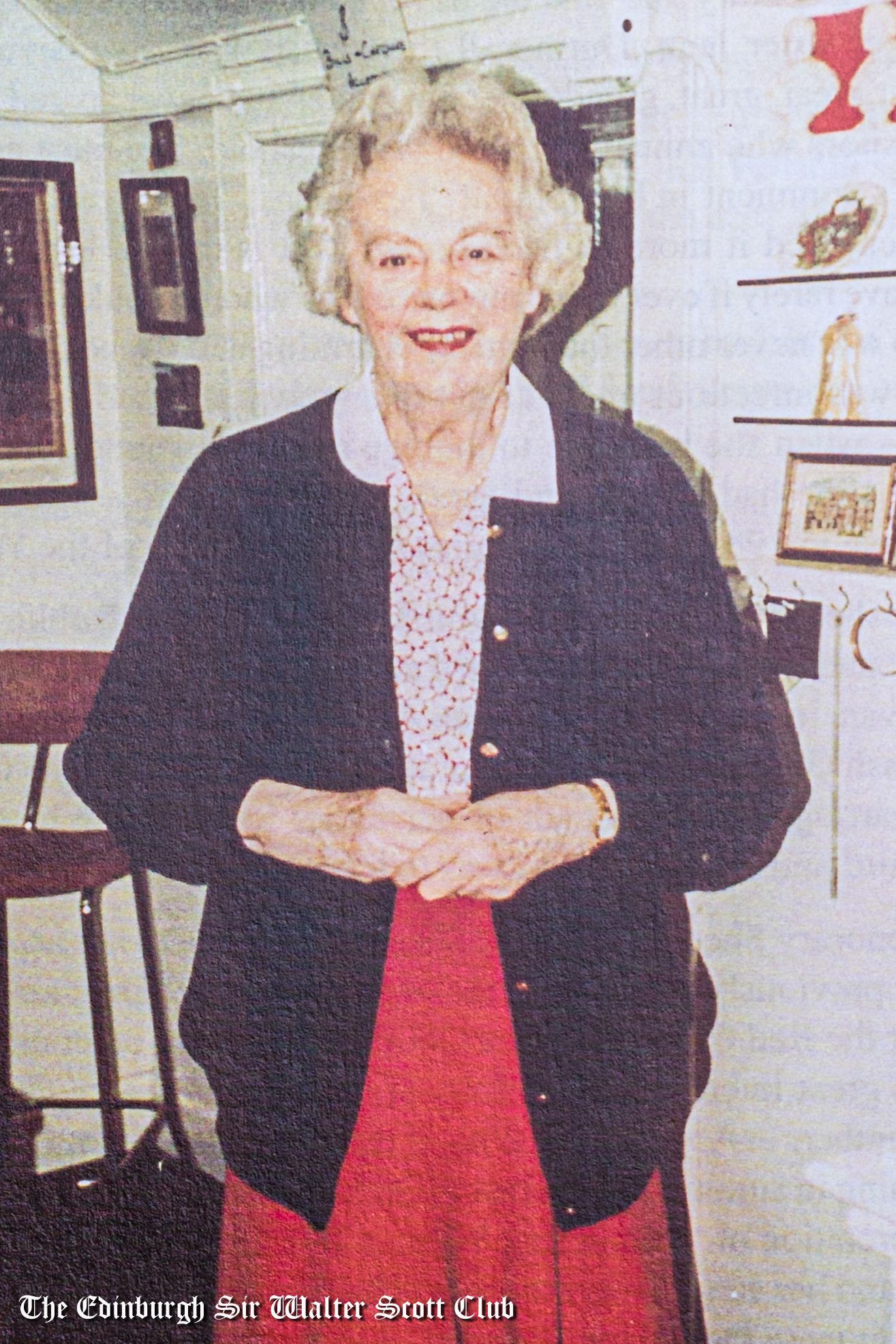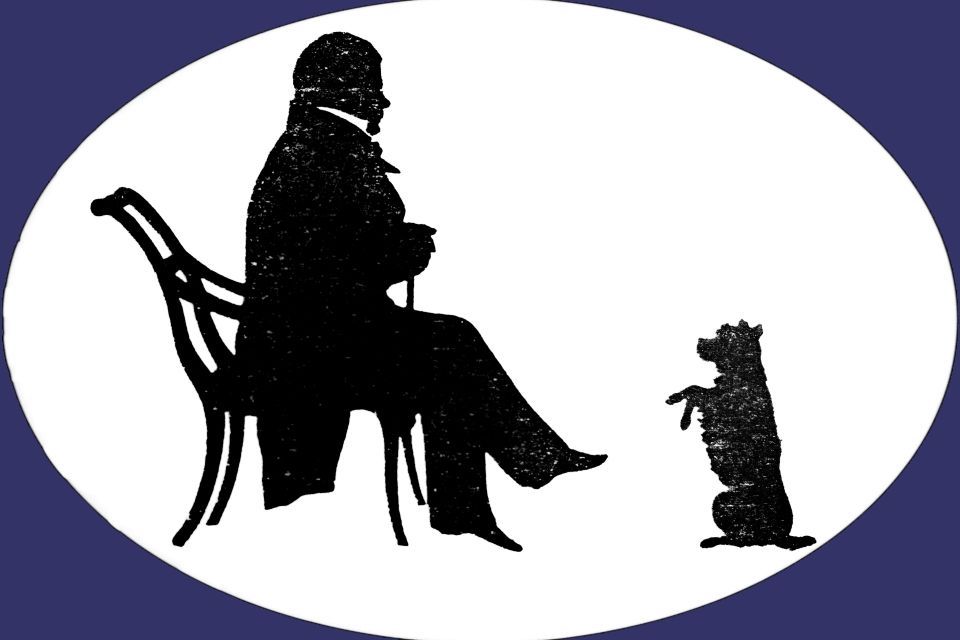1997
Our President in 1997/8 was:
Mrs. Patricia Maxwell-Scott
She proposed the Toast to Sir Walter at our 89th Annual Dinner on Friday 6th March 1998 in The Balmoral Hotel
Download the [transcript] or read the [bulletin]
Summary of the Speech:
Patricia opened with light-hearted remarks comparing herself and her sister Jean to "Hinge and Bracket", setting a humorous and affectionate tone. She expressed deep gratitude for being President of the Club, stressing her pride in being a descendant of Sir Walter Scott.
Key Themes and Anecdotes:
1. Childhood at Abbotsford:
- Patricia and Jean were raised in Abbotsford after their father returned post-war.
- The house had been let for 40 years prior.
- As children, they had to sing Scottish songs like Bonnie Dundee to visiting guests—something they found frightening.
2. Life at Abbotsford:
- The house was poorly lit with gaslight until electricity was installed in 1962.
- The chandelier was ceremonially lit and the house floodlit for a week.
- Visitors in early days paid 6d, and there was sometimes extra “licence” given when their parents were away.
3. Historical Features of the House:
- Bedrooms reached by a spiral staircase.
- Scott’s study was accessed via a private staircase from his dressing room.
- He worked tirelessly, often accompanied by dogs.
- Tradition of animals continues – including Jean’s Olympic horse Sir Wattie.
4. Gardens and Grounds:
- Sir Walter’s walled garden had heated walls to protect fruit.
- His 'orangerie' was a favourite spot for evening reflection with piping.
- Tree-planting was a passion, especially with his gamekeeper Tom Purdie, whom he had once tried in court for poaching.
- Notably, some plantations were laid out in the formation of the Battle of Waterloo.
5. Centenaries and Public Engagement:
- Patricia unveiled a bust of Scott in Galashiels in 1932, and wore a traditional cloak.
- The bicentenary in 1971 was especially memorable:
- She toured America and Canada on behalf of the Tourist Boards.
- Took part in a mail coach journey from Abbotsford to Melrose.
- House was again floodlit; exhibitions were held in Parliament House and Waverley Market.
6. Distinguished Visitors:
- The Queen and Duke of Edinburgh (1988, private visit).
- King George V and Queen Mary (1923).
- Joan Sutherland, Maggie Smith, Harry Secombe, and others came unannounced and informally.
- Visitors increased to around 60,000 a year post-America tour.
7. Humorous Public Misconceptions:
- Some visitors thought it was Robert Burns’s house, or even associated it with Sir Walter Raleigh or Scott of the Antarctic.
- Americans often claimed descent from Scott; Patricia handled such claims tactfully.
8. Gratitude and Legacy:
- She praised the many loyal staff and supporters of Abbotsford.
- Described Scott’s multifaceted life: writer, lawyer, family man, and Clerk of Works of his own home.
Interesting Points:
- Sir Walter made his own gas for lighting, which flickered and smelled—highlighting his inventive domestic life.
- Tree plantations were arranged to mimic the Battle of Waterloo, showing his patriotic imagination even in landscaping.
- Sir Wattie the horse, an Olympic medal-winner and Badminton champion, embodied the enduring link between heritage and present-day life at Abbotsford.
- Visitors' confusion over Scott's identity (mixing him with Raleigh, Burns, and Scott of the Antarctic) adds a layer of cultural humour and the ongoing challenge of historical education.
- Patricia's sense of humility and affection for the house and her sister made the address deeply personal, warm, and poignant.
Download the [transcript] or read the [bulletin]

Subsidiary Toasts Summary:
1. Chairman’s Welcome and Top Table Introduction (Sheriff Gordon Shiach)
- Hosted with warm formality, naming notable guests including:
- Mr Michael McIntosh-Reid (educationist and speaker)
- Mrs Allie Drummond
- Lord Prosser (former Chairman)
- Mrs Light and Mr John Light (Rector of Edinburgh Academy)
- Mrs Patricia Maxwell-Scott (President, and direct descendant of Sir Walter)
- Dame Jean Maxwell-Scott (sister of Patricia and lady-in-waiting to Princess Alice)
- Councillor Drummond and Lady Prosser
2. The Grace
- Delivered by Reverend Duncan McGregor, with a prayer linking Scott’s memory, Edinburgh, and Abbotsford.
3. Toast to the Queen
- Traditional, respectfully observed.
4. Chairman’s Toast: The City of Edinburgh
- Quoted Scott’s journals, highlighting his deep affection for the city.
- Introduced Councillor Eric Drummond, linking his role to Scott's career in law and civic duty.
5. Michael McIntosh Reid: Toast to the Edinburgh Academy
- Spoke with wit and authority as a teacher and coach.
- Traced the Academy’s roots to 1824 and its founders (Cockburn, Horner).
- Recalled Scott’s opening address stressing the value of broad learning.
- Wove in entertaining anecdotes about Lockhart and ‘green breeks’.
- Used Redgauntlet to reflect on evolving educational philosophies.
- Stressed the importance of inspiration and rejecting exam-focused teaching.
6. John Light: Reply from the Rector of Edinburgh Academy
- Began humorously, referencing personal nerves and colourful school stories.
- Reflected on his first encounter with the Academy, linking his appointment to its historical figures.
- Identified three themes:
- Scott’s legacy within the school;
- The future of independent schools;
- Modern threats to their ethos.
- Criticised over-reliance on technology and bureaucracy in education.
- Called for resilience, rigour, humility, and the preservation of language, science, and critical thinking.
7. Lord Prosser: Tribute to the President
- Praised Patricia and Jean Maxwell-Scott for embodying Abbotsford’s spirit.
- Emphasised how their presence connected the past to the present with grace and universality.
Final Thanks
- The Chairman closed with thanks to organisers, hotel staff, and attendees.
- Quoted Marmion to end with poetic dignity.
- Lord Prosser offered a final thanks to Chairman Gordon.
Notable and Interesting Points
- Personalisation: The speakers effectively intertwined Sir Walter Scott’s biography with their own anecdotes, making Scott’s legacy feel alive.
- Educational Critique: There was substantial commentary on modern education—its challenges, its over-standardisation, and its need for inspirational teaching.
- Humour and Humanity: Amid formal tributes were vivid, humorous moments (e.g., pupils in wigs, Benjie on horseback, teachers dancing).
- Continuity: A strong theme throughout was the idea that Patricia and Jean Maxwell-Scott had become living symbols of Abbotsford’s continuity.
Download the [Subsidiary Toasts] to read in full.


